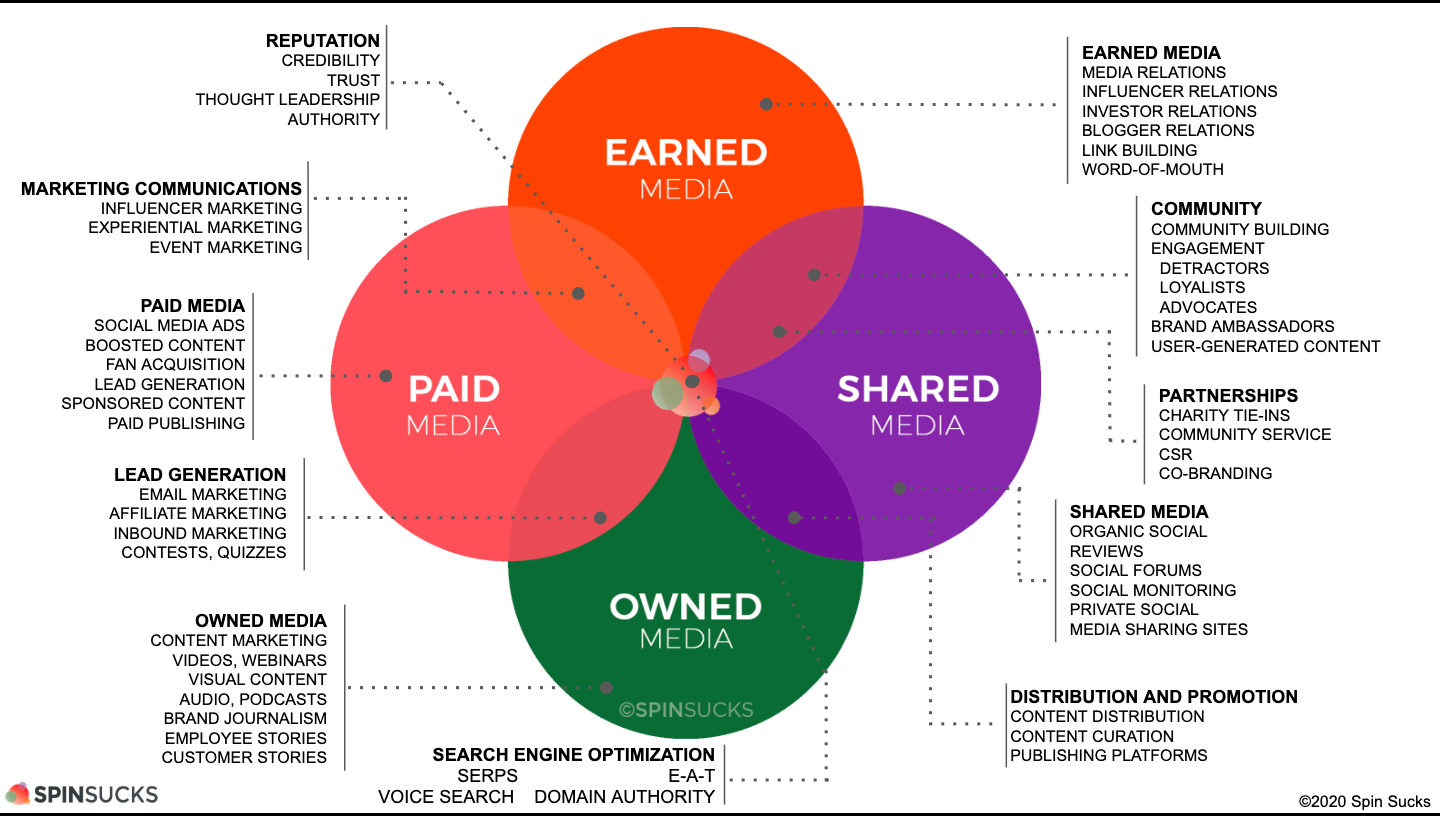
It should come as no surprise to you that public relations is more than just media relations.
In fact, in a truly integrated PESO Model, media relations—or earned media—never comes first. In fact, it often comes last.
If you’ve done any media pitching in the last few years, you already know one of the first questions you hear from a journalist is, “Where else are they published?”
Of course, if your executive isn’t published anywhere yet, it’s a chicken and egg scenario, which is why you have to start somewhere, start to build a groundswell, and, along the way, constantly test effectiveness.
To do that, you must ask yourself:
- Is this content contributing to PR metrics?
- Will this being published here eventually get us the media attention we desire?
- Is this going to help us truly integrate a communications strategy?
The first question is the most important because, if you have that down, the rest will follow.
And, when it comes to identifying the PR metrics you’re measuring, it’s crucial to remember that it’s not a one-size-fits-all.
I truly believe everything we do can—and should—lead to sales (or more donors or more members), but there are a plethora of metrics to study and track.
Choose the Best Metrics for Your Work
That said, not every metric will be applicable to every campaign.
There’s a full breakdown of the metrics every integrated marketing communications program should employ in the PESO Model here.
After you read that, you should be able to answer:
- What are the key metrics for our content marketing?
- How will we measure effectiveness?
- Is this leading to more consumption?
- Are we going to get more shares?
- Will this drive lead generation?
- Can we attribute more sales?
Website Performance, Keywords, and Analytics
In the PESO Model, one of the metrics we measure under earned media is web performance, which leads to more consumption.
To measure the effectiveness of your content, first, take a look at Google Analytics to understand how your content is performing.
This will help you create a baseline for your metrics.
Look to see:
- What’s the bounce rate?
- Which keywords are leading to your content?
- What are your visitors exploring on your site?
- Where are your new audiences coming from?
All of these are key metrics influenced by public relations.
Once you’ve identified these metrics, it’s time to build your content strategy.
Is your PR strategy measuring new audiences based on certain keywords?
Focus on creating high-quality, evergreen content around those keywords to help boost your website’s authority and visibility.
This will complement both your SEO and public relations efforts to bring in prospective clients.
The Power of Social Media Advertising and Sharing
Now that you have your owned media down and you know what you’re going to measure, it’s time to move to shared media.
When it comes to the PESO Model, social media metrics fall under two different categories: The effectiveness of social media advertising, and (I hate to say it), social media shares.
While shares are a vanity metric and don’t mean a whole lot, the numbers do give us a baseline knowledge of brand awareness and engagement. They also tell us what works best for our audience.
These may be the easiest to measure, but they’re also the most unpredictable.
Sure, there are studies around the most optimal time to share your content, whether or not you should include images, where to place your sharing buttons on your website, and so many more little nuances when it comes to social media.
In terms of effective strategy and execution, however, the most important thing is to create compelling content (which is why it’s the first thing to focus on in the PESO Model).
Plan Your Content to Extend the Rest of the PESO Model
Because content must come first, it’s extremely important to plan it around your goals (including PR goals) and your (target) audiences.
I realize there really isn’t a marketing funnel anymore; it’s more a circle that top to bottom, but I’m going to describe the metrics as a funnel, to keep things easy.
- The top (or broad content) goals should simply be to build industry awareness, attract links, and reach new audiences. Align these with your influencer outreach, and the content your brand ambassadors are creating for you. If you’re focusing on a specific theme for your to content during the course of a specific period, your outreach should be aligned with your editorial calendar and vice versa.
- The middle (or discovery content) goals should be to create awareness of a solution you have to an industry problem, awareness of your organizations, and help prospects to remember you. What are the questions your customers are asking? What are the keywords coming up in searches leading to your blog or website? Develop content to help increase your authority in your industry.
- The bottom (or consideration content) goals should be to build product awareness and convert prospects to customers. Why makes your product stand out? What is so different about your company? This is where stories come into play: Who are your employers? What do your existing customers say about you? What makes you human? What is the driving factor behind your company?
The only way smart content development can truly help boost PR is to measure, measure, measure.
There is absolutely no running away from metrics as a communicator, but a truly integrated PESO Model can help you reach those goals.
Do you want to learn how to build and scale an integrated communications program? One which drives real business results and shows the PR value clients care about? Become PESO Model Certified today.